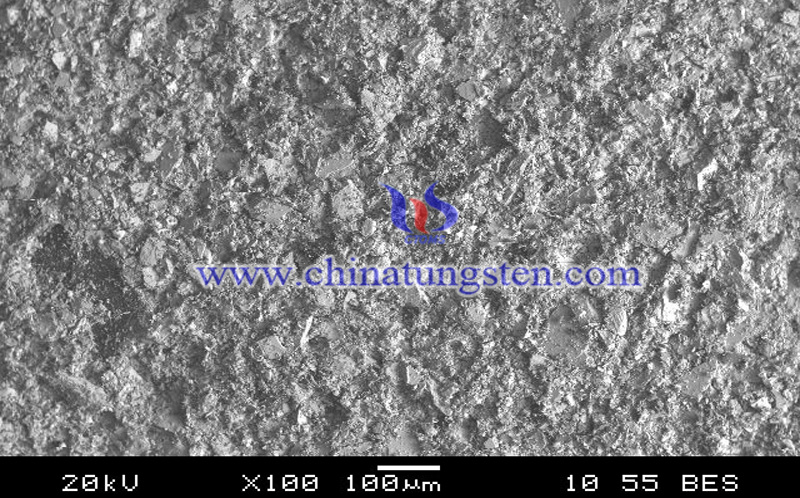China Tungsten Concentrate Output Will Keep Stable 2/2
- Details
- Category: Tungsten's News
- Published on Tuesday, 18 June 2019 18:45
Analyzing on the tungsten concentrate output status by the supply side and demand side, although tungsten concentrate output will keep stable in a short-term, while there are challenges and risks exist.
From supply side to analyze, first is the steady supply of domestic tungsten concentrate raw materials. Affected by factors such as policy control, resource endowment, mining cost, safety and environmental protection, etc., the output of the main mining tungsten mine and the comprehensive utilization of production will decline, and the processing output of mineral products will shrink, which will offset the increasing production of the main mining tungsten mine due to technological transformation in individual areas.
Secondary resource recycling and utilization grow steadily, but the impact on market supply is limited. Second, the output of foreign tungsten concentrates remained stable. In the current global economy and tungsten market price situation, foreign production mines are still difficult to recover (for example, the Canadian Cantung Mine tungsten mine is costly and has been discontinued since December 2015. The UK Hermerdon tungsten mine can only be realized after it was put into operation in September 2015. Half of the production capacity has been discontinued in October 2018.
The new project has been slow to advance (for example, the Canadian Mactung Mine tungsten mine has not yet been developed. Almenty has 5 tungsten mines under construction and discontinued. Currently only 3 mines are in production; South Korea's Shangdong tungsten mine is still under construction. Vietnam's Niu Phao tungsten concentrate production remained stable; Bolivia and Austria's tungsten concentrate production was small and stable; Mongolia's tungsten concentrate production decreased sharply; North Korea's tungsten concentrate production increased significantly; Production of tungsten concentrates such as Rwanda, Australia and Brazil is low.
Third, foreign reserves and inventories are still at historically low levels. The US tungsten strategic reserve has declined, and Russia's reserves are very low. Due to market uncertainties such as Sino-US trade friction, foreign tungsten companies are cautious on purchasing and inventory control.

Looking from demand side, in 2019, tungsten market demand will continue to maintain a low growth rate. First, China's economy is generally stable, quality efficiency is steadily increasing, and the manufacturing purchasing managers' index continues to remain in the boom zone. In particular, high-tech manufacturing and equipment manufacturing, infrastructure construction and private investment continue to grow, and will continue to drive demand in the tungsten concentrate market.
Second, with the turning of Sino-US trade friction, the confidence of the international tungsten concentrate market has recovered. Although the demand for foreign tungsten concentrate market has weakened, it is expected to continue to maintain a steady state. In 2018, the total US GDP is expected to exceed 20 trillion US dollars for the first time, the fastest growth in the past four years, the unemployment rate hit a new low in 2000, the consumer confidence index reached the highest level in 2000, the number of drilling rigs and manufacturing orders increased. In the fiscal year 2017 and 2018, the US Kenner achieved sales revenue of 2.368 billion US dollars, a year-on-year increase of 15.04%, and a net profit of 200 million US dollars, an increase of 307.38%.
Although the economy of the 28 EU countries has slowed down, the overall operation is stable, and consumer and market confidence is still at a high level. It is expected that GDP growth will remain at around 2.1% in 2018. Sandvik's 12-month consecutive 12-month order revenue, and adjusted operating profit and cash flow all reached record highs, with annual orders increasing by 9.0% year-on-year. Among them, orders for mining and rock drilling technology and materials technology sectors grew by double digits, and growth in most regions was strong. Although the growth of machining solutions sector slowed down, there was also a one-digit growth, mainly due to the reduction of orders in Asia and automobiles. The impact of industrial slowdown. The annual operating income was SEK 10.072 billion, up 11.0% year-on-year, and operating profit was SEK 18.625 billion, up 27.0% on year-on-year basis. Japanese cemented carbide production continued to grow and demand grew steadily.
China Tungsten Concentrate Output Will Keep Stable 1/2
- Tungsten Manufacturer & Supplier, Chinatungsten Online: www.chinatungsten.com
- Tungsten News & Prices of China Tungsten Industry Association: www.ctia.com.cn
- Molybdenum News & Price: news.molybdenum.com.cn
- Tel.: 86 592 5129696; Fax: 86 592 5129797; Email: sales@chinatungsten.com



 sales@chinatungsten.com
sales@chinatungsten.com